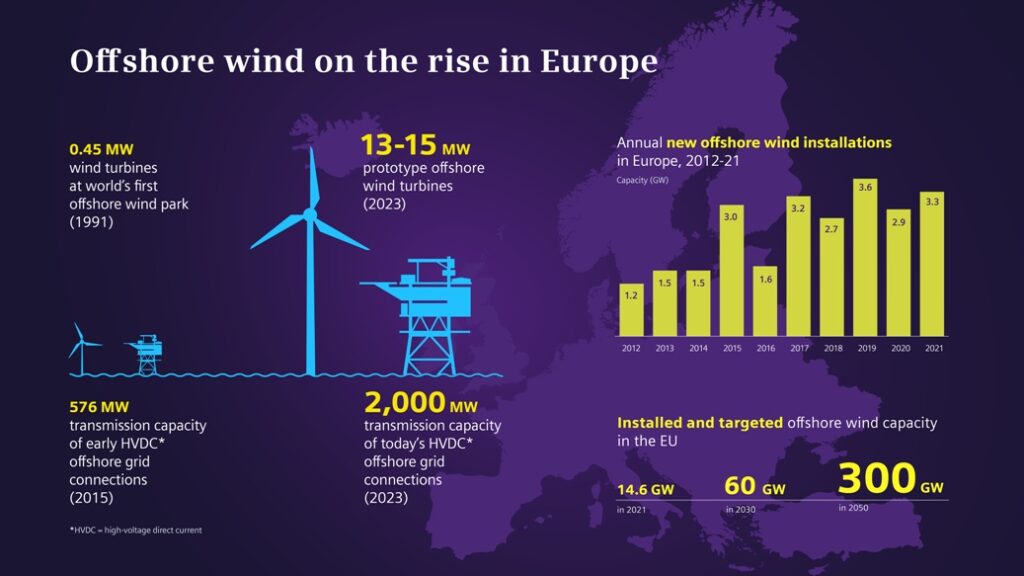Siemens Energy has won what is its largest offshore grid connection order in the company’s history. The contract is understood to be the world’s first order for a 2-GW grid connection at sea.
According to an official release, a consortium of Siemens Energy and Dragados Offshore will build converter systems for two offshore grid connection systems. The order was placed by German transmission system operator Amprion.
With this, a single grid connection will transport up to 2 GW of offshore wind power from the German North Sea to the onshore power grid.
In total, up to 4 GW of green electricity from several offshore wind farms in the German North Sea can be transported to shore – enough electricity to meet the needs of about four million people.
The contract for the consortium is worth a total of more than €4 billion (around Rs.8,800 crore) including maintenance for ten years. For Siemens Energy it is the largest offshore grid connection order the company has received to date, the company release said.
Efficient transmission of green power
“The wind energy industry has repeatedly achieved outstanding technological advances in recent years, be it in the performance of wind turbines or grid connections,” said Tim Holt, member of the Managing Board of Siemens Energy. “The two-gigawatt system fits in seamlessly here, making the transmission of green power more efficient and creating standardization where individual designs were previously necessary. Developments in the industry have taken time, which must no longer be wasted against the backdrop of ambitious offshore expansion targets and the drastic consequences of climate change,” added Holt.
Scope of works
Siemens Energy’s scope of supply consists of two converter platforms at sea and two associated stations on land. The wind turbines generate alternating current and feed it into the converter platforms, which convert the alternating current into a direct current. Only in this way can large amounts of energy travel the long distance of around 390 km each to the two converter stations on land via a direct current cable.
The converter stations on land are being built near Wehrendorf in Lower Saxony and Westerkappeln in northern North Rhine-Westphalia.
The connection systems are expected to transmit power as early as 2029 and 2030, supporting Germany’s accelerated energy transition goals.
Also read: Siemens Energy Wins Its Largest Offshore Grid Connection Order To Date
Bipolar configuration
Siemens Energy’s recently implemented projects had a transmission capacity of 900 mw. Siemens Energy used a “bipolar configuration” design to create the two-GW systems, meaning they can effectively operate at twice the voltage and transmit twice the power. The new projects are among the world’s first offshore grid connections of this type.
Wind energy in Germany
Offshore wind power installed capacity in Germany is to increase to at least 30 GW by 2030 and as much as 70 GW by 2045. However, this requires more than just new wind farms. More powerful HVDC transmission systems must be built to transport electricity over long distances. The increase in transmission capacity to 2 GW represents a decisive technological leap, as more wind farms can now be connected to the grid via the new systems.
Featured infographic sourced from Siemens Energy

